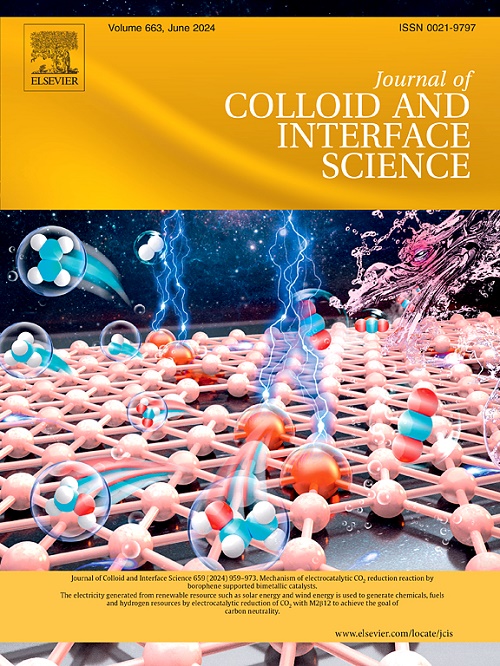Thermal responsive nanobombs generating reactive oxygen species for synergistic anticancer therapy
IF 9.4
1区 化学
Q1 CHEMISTRY, PHYSICAL
引用次数: 0
Abstract
The nano-based therapeutics to induce cellular oxidative damage is considered promising in cancer treatment. Photodynamic therapy (PDT) is a primary antitumor oxidative damage treatment method. However, the hypoxic environment of tumor tissues and the short lifetime of singlet oxygen significantly hampers PDT efficacy. Fortunately, nitric oxide (NO), as a form of gas therapy, can generate more toxic oxidative peroxynitrite ions (ONOO−) with hydrogen peroxide (H2O2), which significantly enhance the efficacy of PDT. In this context, we fabricated a thermally controlled reactive oxygen nanobombs CaO2@LA-ICG@TD (CAI@TD), which can release many reactive oxygen species (ROS) to enhance the synergistic anticancer efficiency under a. The cellular studies revealed that CAI@TD could produce oxygen and H2O2 to heighten the efficacy of PDT and NO and induce necrotic-apoptosis of MDA-MB-231 cells by mitochondria damage, lipid peroxidation, and DNA fragments. Moreover, CAI@TD with 808 nm laser irradiation achieved a significant inhibition on the xenograft tumor growth. This work provides an efficient strategy to produce a high amount of ROS for synergistic anticancer therapy, offering a ray of hope in the fight against cancer.

求助全文
约1分钟内获得全文
求助全文
来源期刊
CiteScore
16.10
自引率
7.10%
发文量
2568
审稿时长
2 months
期刊介绍:
The Journal of Colloid and Interface Science publishes original research findings on the fundamental principles of colloid and interface science, as well as innovative applications in various fields. The criteria for publication include impact, quality, novelty, and originality.
Emphasis:
The journal emphasizes fundamental scientific innovation within the following categories:
A.Colloidal Materials and Nanomaterials
B.Soft Colloidal and Self-Assembly Systems
C.Adsorption, Catalysis, and Electrochemistry
D.Interfacial Processes, Capillarity, and Wetting
E.Biomaterials and Nanomedicine
F.Energy Conversion and Storage, and Environmental Technologies

 求助内容:
求助内容: 应助结果提醒方式:
应助结果提醒方式:


